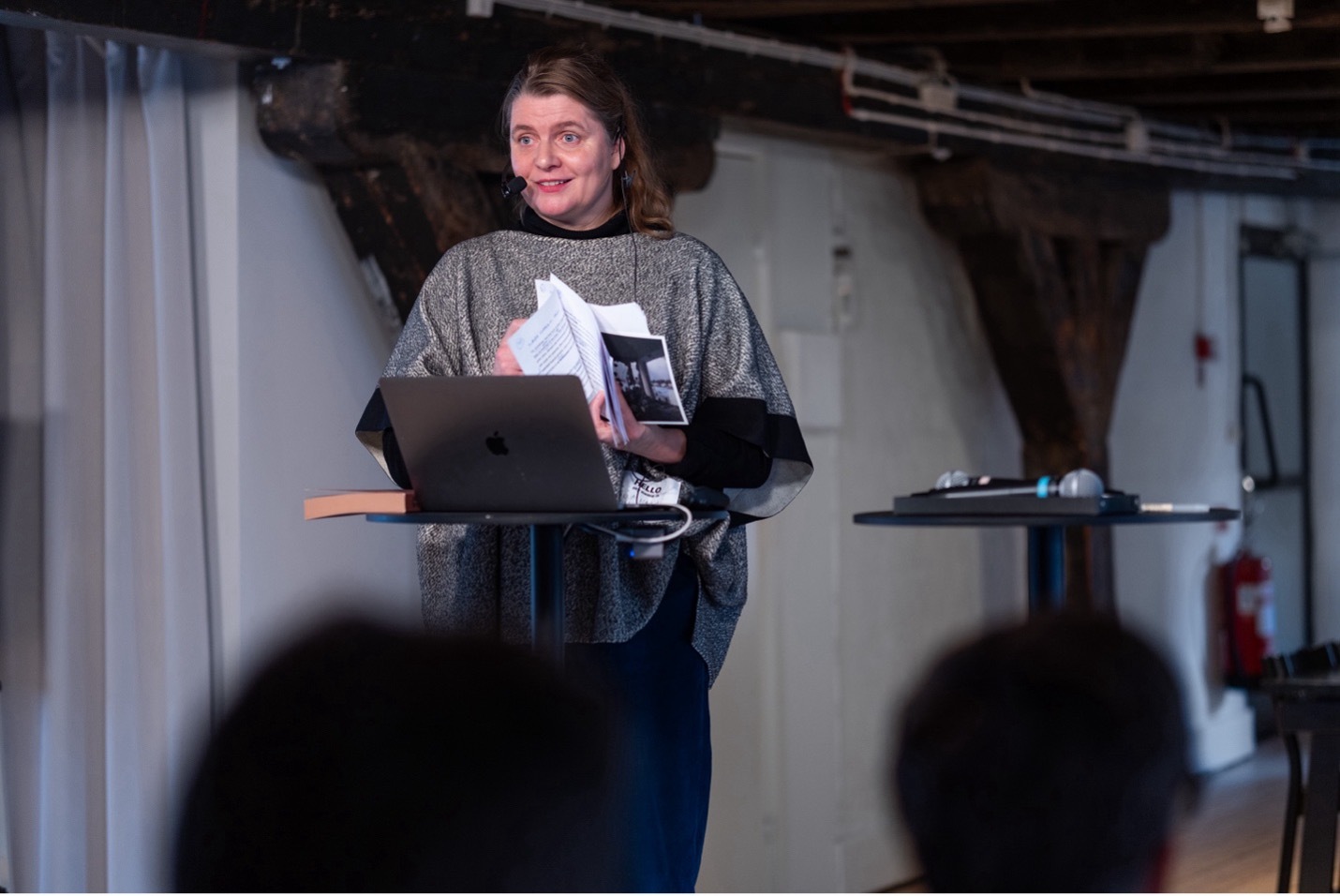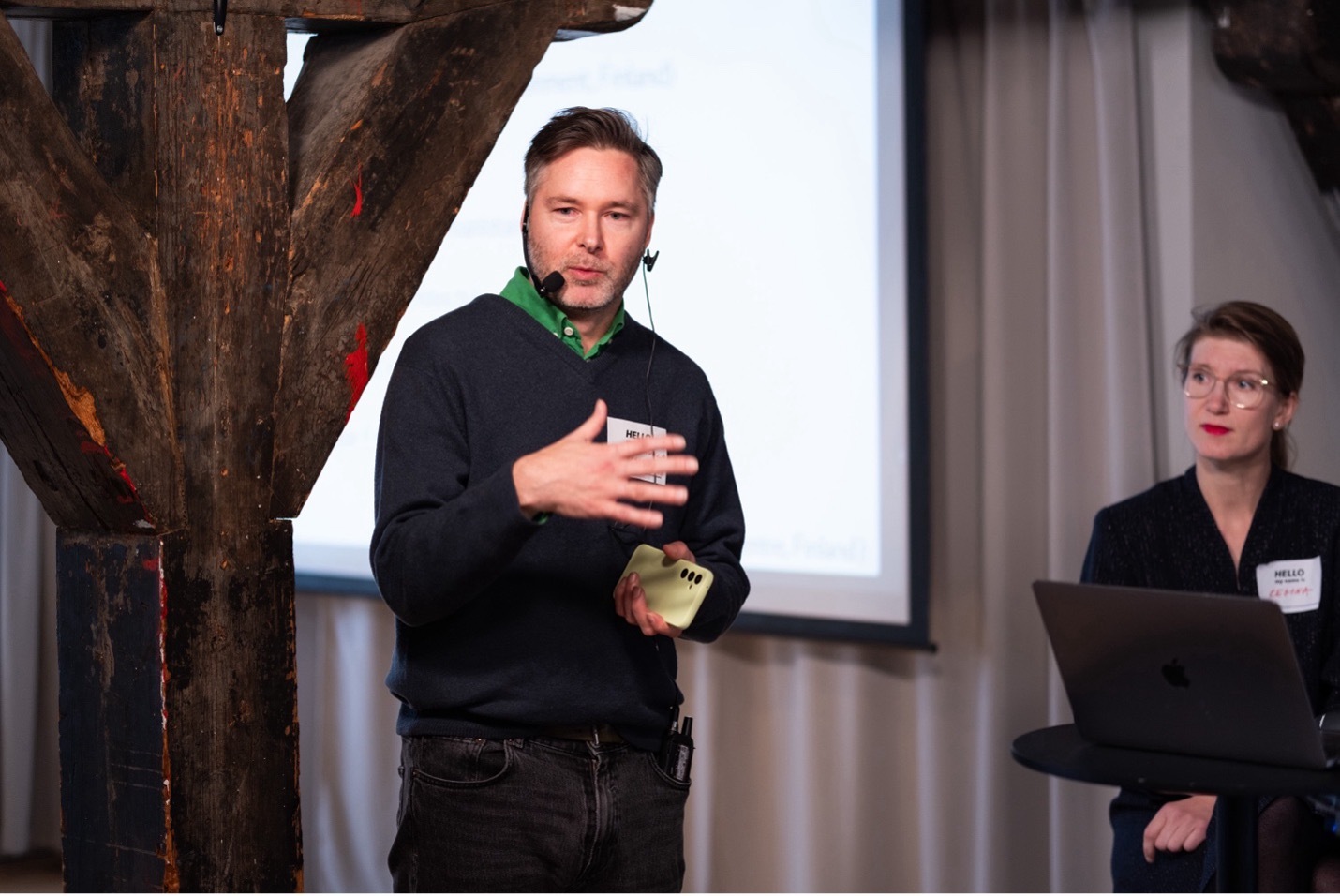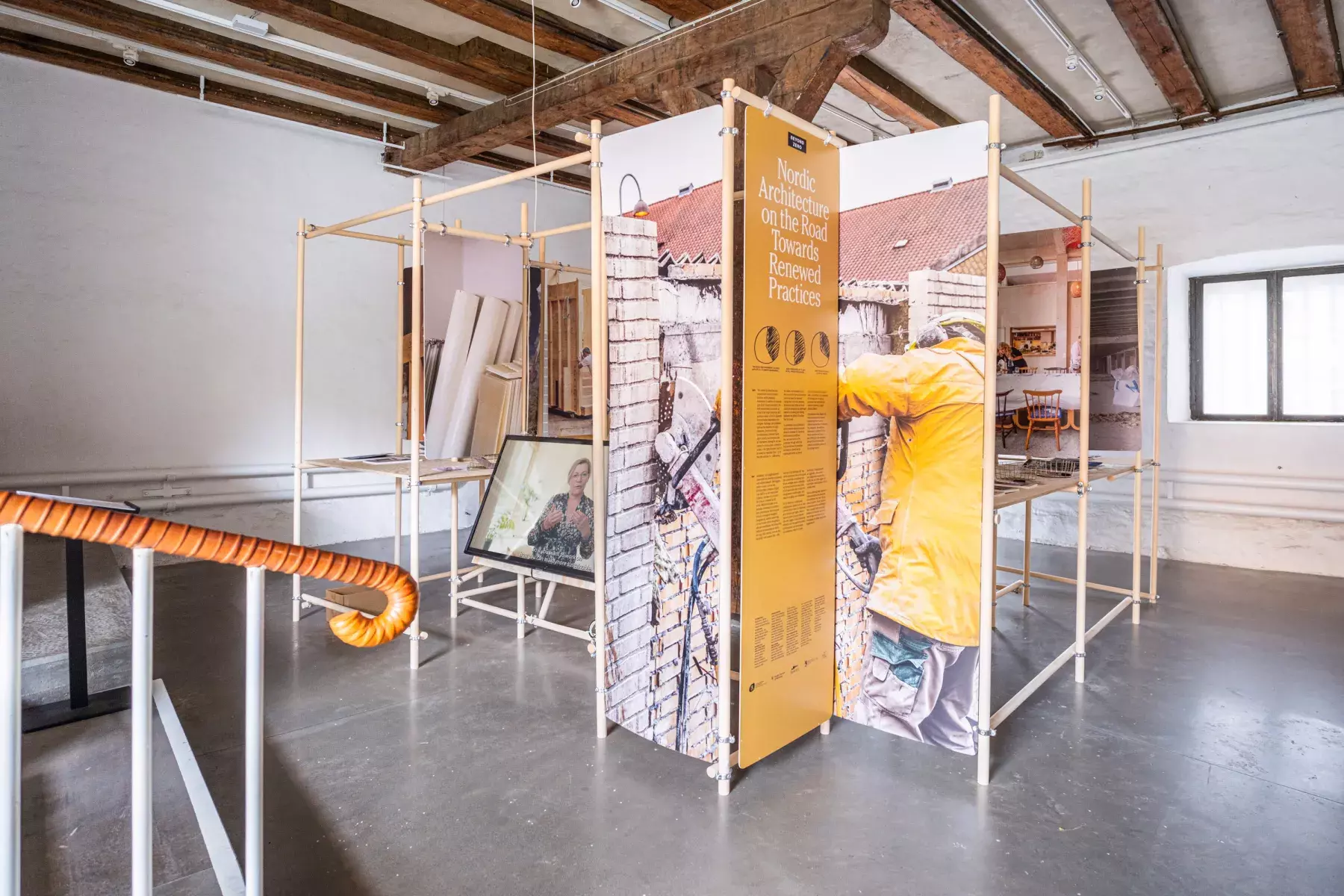Nordic Carbon Neutral Bauhaus concludes in Malmö and considers steps into future collaboration

Daniel Engvall, Form/Design Center
As the Nordic Carbon Neutral Bauhaus project is about to come to an end, a closing seminar and an exhibition at Form/Design Centre in Malmö, Sweden, gathered stakeholders to celebrate the shared journey and consider the possible steps towards the future in the spirit of Nordic NEB.
Launched at the New European Bauhaus Festival in 2022, the Nordic Carbon Neutral Bauhaus (NCNB) has explored how the NEB's guiding principles – making the green transition beautiful, inclusive, and sustainable – can be interpreted and implemented in Nordic societies.
Envisioning carbon-neutral building and living through arts, design, architecture, and culture, Nordic Bauhaus has pushed Nordic stakeholders towards the carbon neutrality targets and other NEB values by sharing good examples of New European Bauhaus values across the Nordics and Baltic region.
The NCNB has championed visions for carbon-neutral living and building practices through design, culture, and architecture by fostering collaboration across disciplines and connecting diverse stakeholders.
The Nordic Carbon Neutral Bauhaus celebrated its culmination in a two-day event at the Form/Design Center in Malmö, Sweden, from November 20–21, 2024. The gathering brought together policymakers, architects, and sustainability experts from across the Nordic and Baltic regions to discuss the future of sustainable design and highlight the Nordic contribution to the New European Bauhaus.
Connecting the dots between NEB and architectural policies
At its heart, the NCNB seeks to address the intersection of ecological, cultural, and social challenges, emphasising the need for a broad cultural shift in the built environment. In its Nordic application, the initiative aligns closely with Nordic architectural policies, which increasingly prioritise integrated solutions to societal issues, harnessing the transformative power of architecture and design.
Achieving this requires heightened awareness and a strong commitment from all decision-makers, as it plays a vital role in driving social progress. The ecological transformation needs to be also a cultural change.
The need for broad cultural change in our building culture was also highlighted in the speeches by Anna María Bogadóttir (Úrbanistan) and Lone-Pia Bach (Kungl. Konsthögskolan). Both speakers emphasised the role of art and creativity in exploring the deeper values of the existing buildings and the medium of architecture as way of both representing existing societal values and changing them.

Showcasing her biographical novel Jarðsetning on the demolition of a modernist bank building in Reykjavik city centre, Bogadóttir put out a powerful and emotionally charged argument on simultaneously fostering social, ecological and cultural aspects of existing building stock.
Similarly, Lone-Pia Bach challenged not only the direct ecological shortsightedness of demolishing the existing building stock but, more broadly, fundamental societal and epistemological values behind it, calling for a new understanding of the relationship between the built environment, nature and the human condition.

What is needed to combine the green transition with a more holistic approach is moving beyond the instrumental understanding of CO2 emissions and acknowledging social and cultural values in the built environment.
The lectures were followed by a comparative panel discussion on architectural policies moderated by Mika Savela (Arts Promotion Center, Finland). Savela took the panelists, including Harri Hakaste (Ministry of the Environment, Finland), Suzanne Pluntke (Boverket), Anna María Bogadóttir (Úrbanistan), Helle Søholt (Gehl Architects), Hilde Sponheim (Doga) and Regina Viljasaar-Frenzel (Ministry of Climate, Estonia) to share their insights on the national policies and discuss the connections of them to NEB.

The panelists highlighted many implicitly shared themes across Nordic architectural policies and the role of NEB as both a cultural transformation tool and a supplementary framework to existing regulations. Panelists further advocated Nordic architectural policy collaboration for sharing best examples, breaking down silos, improving procurement practices, and integrating social and cultural values into sustainable strategies.
The discussion continued in the afternoon roundtable among the participants with proposals for further steps in Nordic Bauhaus, architectural policies and beyond.
Nordic collaborations in NEB and beyond
The second day shifted focus from policy framework to reflections on the initiative's achievements and discussions about its integration into sustainable practices.
Helena Bjarnegård from Boverket offered a comprehensive overview and contextualization of the two-year journey of the NEB in a Nordic context from the preliminary stages onwards – including for example the Into the Woods event with Ursula von der Leyen and Nordic Prime Ministers at the end of 2022.

Looking back, one of the main achievements of the Nordic Bauhaus has been its ability to provide a broad platform simultaneously for decision makers, policy makers, professionals, students and citizens to understand the built environment both as an integral element of current challenges related to sustainability and also a medium in which it is possible to envision alternative trajectories for the future.
“Architectural solutions are already here, everywhere, contributing to sustainable communities and quality of life," as Bjarnegård concluded.
There is indeed a need to change our cultures and ways of living and building within the planetary boundaries.
“How can we not build has become the most critical common challenge for us," as Anders Vestergaard Jensen from The Nordic Council of Ministers stated in his contextualisation of NEB to broader Nordic sustainable goals.

The discussion during the day offered an honest reflection of the very challenge. Nordic countries are fond of presenting themselves as forerunners for welfare, quality of life, down to earth happiness and sustainable architecture and design. Yet the number of resources consumed is far above the average on a global scale.
As was highlighted by many of the speakers during the day, with the Nordic NEB we are also obliged to walk the talk about how Nordic is the leader's beautiful, inclusive and sustainable way of life.
Taking NEB values into practice was further addressed in the panel discussion on the history and future steps of the Nordic Carbon Neutral Bauhaus. Guided by Harri Hakaste, the panellists Anders Vestergaard, Helena Bjarnegård, Malin Kock Hansen from Doga, and Ólavur Jóannesarson Hansen from Landsverk provided insights on the Nordic dimension of NEB to reach climate neutrality, engage with people and lead the good life.

The main takeaway from the panel was that while NEB values provide essential guidance, their actual impact lies in practical implementation. To achieve this, it is crucial to acknowledge the role of NEB in broader Nordic collaboration: existing networks already offer a basis for cooperation, but we must continue dismantling the barriers, foster new modes of collaboration, and recognise NEB values within Nordic sustainable building culture.
The event also reflected on Nordic Bauhaus and other NEB initiatives such as NEB-Star (NEB in Stavanger Region) and Designing the Irresistible Circular Society Desire.
Malin Kock Hansen highlighted how NEB-Star has sought to transform and catalyse collaboration among municipalities, businesses, citizens, and other stakeholders to develop equitable and practical solutions to our climate and social challenges.
Henriette Thuen, in a similar way, shared the lessons learned from Desire. The most important element for circularity relies first and foremost on citizen involvement. Embracing innovative, interdisciplinary strategies that engage everyone is essential for a regenerative urban future. Desire's recently launched policy recommendations can be read here.
Looking Forward: NEB Academy and its northern contributions
The collaboration conducted in Nordic Bauhaus will continue in 2025 in the context of the New European Bauhaus Academy.
The NEB Academy is a key initiative by the European Commission aimed at accelerating the upskilling and reskilling of professionals in the construction industry. It is building a network of training hubs across Europe to leverage regional expertise and provide access to cutting-edge training methods and educational resources focused on sustainability, circularity, and bio-based materials.

The academy's mission is to equip the construction sector with the skills to achieve carbon neutrality while fostering a sustainable, inclusive, and aesthetically pleasing transformation of the built environment.
The inaugural NEB Academy Hubs was launched in 2024, involving fourteen organisations across eleven countries. Among these, the NEBA North Hub has been established by the Research Institutes of Sweden (RISE), Aalto University, and the Estonian Academy of Arts.
NEBA North Hub will focus on lifelong learning in sustainable building, offering, for example, training packages on timber construction and training connecting circular construction to social sustainability and inclusion.
Read more about NEB Academy here.
Beyond Zero -exhibition pushes NEB values into practice
The Nordic Carbon Neutral Bauhaus closing event was accompanied by an exhibition, Beyond Zero, held in Form/Design Center, Malmö, and open until 12 January 2025.
Beyond Zero showcases seventeen projects from the Nordic countries and Estonia, each offering its ambitious perspective on the transition towards sustainable practices in the building industry in the spirit of New European Bauhaus.
The exhibition approaches environmental degradation as a multifaceted crisis involving interconnected issues such as emissions, depletion of natural resources, and ensuring a socially equitable transition.

Architecture and other art forms have been recognized as a powerful medium for driving and communicating the comprehensive transformation required. However, to fully realise its potential, architecture should not be seen merely as static works of art created at a designer's desk and realised in the form of buildings but as ongoing processes.
In the spirit of Nordic Bauhaus, addressing architecture's environmental impacts and its potential to enhance ecological conditions is connected to broader processes that underpin the creation of the built environment.
Illustrating these multifaceted viewpoints, the exhibition showcases 17 projects from the Nordic countries and Estonia, each offering its own ambitious perspective on the transition towards sustainable practices in the building industry.
The exhibition is curated by Finnish architects Iines Karkulahti, Anssi Lauttia, Charlotte Nyholm, and Meri Wiikinkoski (Noon Architects & Vapaa Collective). The exhibition design is by Johannes Nieminen and Tuomas Siitonen (Kombo Office).
The exhibition includes projects by Arhitekt Must, Arkkitehtitoimisto Sipinen & BST-Arkkitehdit, Anna María Bogadóttir, Collaboratorio, Djernes & Bell Architecture, EFFEKT Architects, Helen & Hard, Kaminsky Arkitektur & Hans Eek, Lendager, Mad arkitekter, Erik Mårtensson, Narva Katmann Architects, Pihl Katmann Architects, Kati Salonen & Mona Schalin Architects, Studio Granda, Tengbom and Visit Faroe Islands.
More information about the exhibition can be found here.
All photos by Daniel Engvall, Form/Design Center


